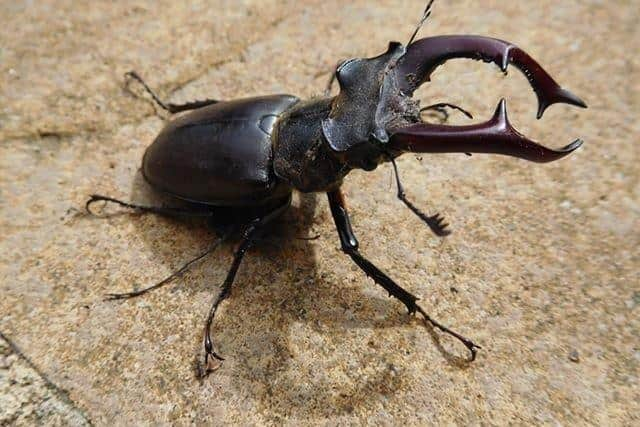Stag beetles in Hampshire and Portsmouth: Volunteers wanted to help count insects this year
and live on Freeview channel 276
Stag beetles used to be widespread across the UK but due to habitat loss they are in decline – and have become extinct in some parts of Britain.
Wildlife charity the People’s Trust for Endangered Species’ annual ‘Great Stag Hunt’ survey records sightings and this summer wants people to let them know all sightings of stag beetles and their larvae as part of the Gerat Stag Hunt. Last year Hampshire had the highest number of sightings in the country at 2,115.


Advertisement
Hide AdAdvertisement
Hide AdPTES conservation officer Laura Bower said: ‘Last year almost 10,000 sightings were recorded by thousands of volunteers, giving us a real insight into where their range is, which is crucial for the species’ long-term survival.
‘More help is always needed though, so whether you’re out in the garden, dog walking in a local park, on the school run or even walking to the pub, keep your eyes peeled for these beautiful beetles and tell us about any you see. You don’t need to be a beetle expert or have taken part before, as PTES has a free ‘beetle ID’ guide to help anyone new to the survey to help them tell the differences between stag beetles and other insects.’
Stag beetles are the UK’s largest land beetles and males are recognisable with antler-like jaws. From late May into July they emerge from the ground in search of mates, and are spotted flying around gardens, parks and allotments on warm summer evenings. They can also be seen on walls and warm tarmac surfaces in urban areas, and in other green spaces such as woodland edges, hedgerows and traditional orchards.
In total last year 9,334 stag beetle sightings were recorded, and after Hampshire the highest numbers were Greater London (1,781), Surrey (1,277), Berkshire (876) and Dorset (754). PTES is keen to hear from people in these areas, as well as other parts of Britain, and in particular, in counties on the edge of their range too, including Norfolk, Cheshire, Bedfordshire, Somerset, Lincolnshire, Northamptonshire and Shropshire.
Advertisement
Hide AdAdvertisement
Hide AdStag beetles usually prefer warm areas with lower annual rainfall and light soils, and as a result are widespread in southern England – excluding the North and South Downs, where the soil is chalky. There are also hotspots in the Severn Valley and in coastal parts of the southwest, but last year PTES received its first ever record of a stag beetle in the Lake District.
Laura adds: ‘This record from a woodland in Cumbria was really surprising, as we weren’t previously aware that stag beetles were in this part of the country. We now really need anyone in the Keswick area where this stag beetle was spotted to find out if that beetle is part of a wider population or if it was somehow transported there by accident.’
There are other ways to help stag beetles too. Those who regularly see stag beetles can join an additional ‘Stag Beetle Count’ survey which enables PTES to understand how population numbers might be changing year on year. This extra survey only requires volunteers to walk along a local transect looking for stag beetles for 30 minutes, six times over June or July, on warm sunny days.
To find out more see stagbeetles.ptes.org